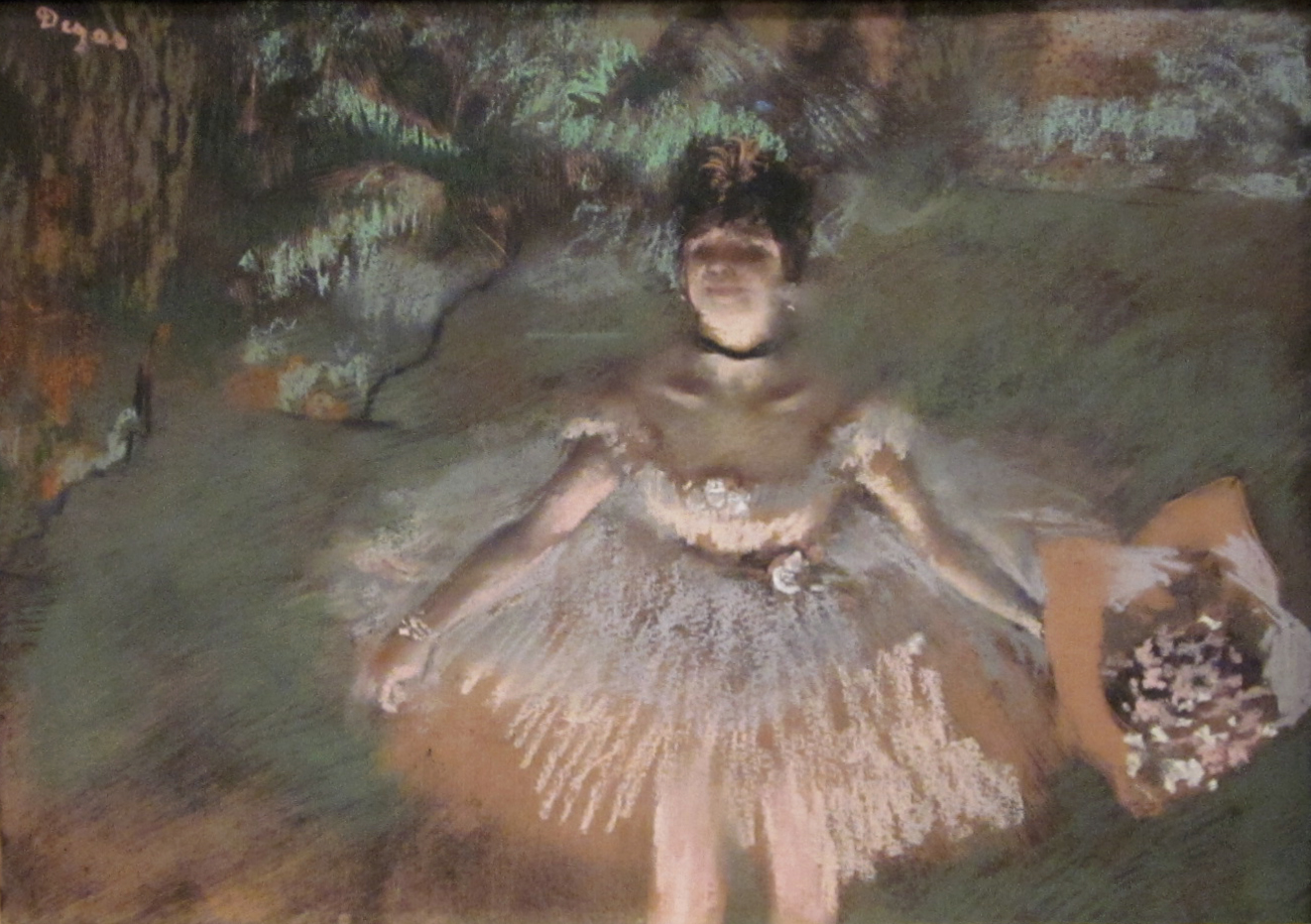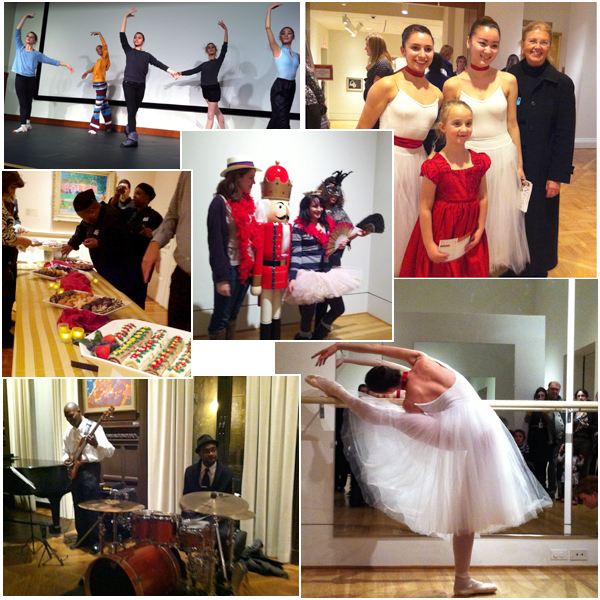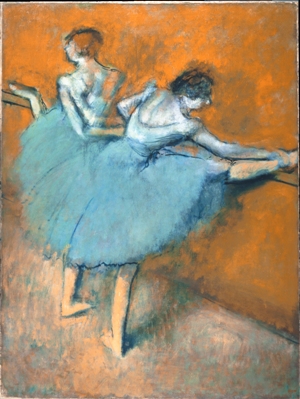Do you have a favorite Phillips frame? Paul Klee’s handmade frames, preserved at the Phillips under secondary shadowbox frames, first came to mind for Paintings Conservator Patricia Favero, who was quick to add that she has many other favorites.
Many–if not most–of the artworks owned by the Phillips are displayed in frames. I’d venture to guess that viewers spend less time considering a frame than the work it surrounds, and that artists (and curators) prefer it that way. Frames serve the functional purpose of protecting a painting or a work on paper and also act as a support by which pieces can be mounted to a wall. Nevertheless, frames are carefully designed and selected to complement the art they hold.
Dancer onstage with a Bouquet (c. 1876), a small but difficult to miss piece in the museum’s current exhibition Degas’s Dancers at the Barre: Point and Counterpoint features a frame made by Degas himself.

Edgar Degas, Dancer Onstage with a Bouquet, c. 1876. Pastel over monotype on laid paper, 10 5/8 x 14 7/8 inches. Private Collection
It is quite interesting to observe how the design of the frame differs from the frames that surround the other works in the exhibition. Favero, who retouched the Degas frame to prepare it for display at the Phillips, said that ordinarily an artwork’s frame is chosen by a dealer, curator, or private collector. Interjecting her own opinion on the matter, she added “[frames] can add or take away from the work.”

Can you guess which Phillips artworks go in the frames pictured here? Hint #1: One is the Degas frame. Hint #2: All pieces are currently on view.
Click through the links below to see how your memory fared!
Upper left
Upper right
Bottom left
Bottom right
–Piper Grosswendt, Museum Assistant/Marketing Intern


